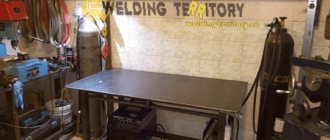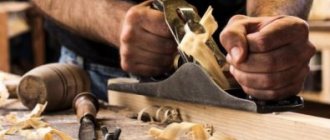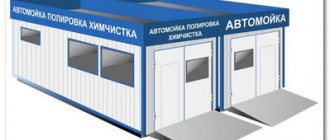What is pottery and pottery art
Pottery was held in high esteem in ancient times. But at first, products for everyday use were made from animal droppings, and clay was used as a gluing element. Several thousand years passed before man realized that clay itself was an excellent material for modeling.
The first clay products were imperfect in shape, as they were molded by hand. And only the invention of the pottery wheel turned the craft into an art: the products acquired symmetry and began to look neat. And after the advent of the kiln, ceramics became durable and waterproof.
Pottery has long been considered a woman's occupation. Only when the potter's wheel was created did men start making clay products. Potters began to unite in workshops, and ceramic products became even more widespread.
Clay was mainly used to make dishes and household utensils: pots, mugs, frying pans. Toys were often made from pliable material. This is how the famous crafts appeared: Filimonovsky, Dymkovsky, Kargopolsky, known throughout the country.
New materials replaced archaic clay, but over time, housewives saw the advantages of earthenware:
- resistance to mechanical damage;
- heat resistance – does not deteriorate at high and low temperatures;
- clay does not emit impurities and odors during food storage;
- food does not burn during cooking;
- cereals and flour do not harbor insects, etc.
It is interesting that technology has not changed much over many centuries, despite new devices and mechanisms for work.
A pottery workshop can be a good start for the development of different areas of the ceramic business:
- manufacturing products in batches or to order;
- production of souvenirs;
- teaching skills, opening schools or studios with programs for students of different ages;
- organizing master classes where everyone can try to make simple things with their own hands;
- Providing premises and equipment for rent to those who wish.
Workshop space and equipment
Once you have completed all the necessary documents, you can proceed directly to organizing a pottery workshop.
First of all, you need to rent a suitable room. It is desirable that it consist of two rooms. One of them will be equipped as a workshop, and you will use the second as a warehouse for finished products. The area of the room should be at least 40–50 square meters. meters. Next, we move on to choosing equipment. If you don’t know anything about this matter, you should seek help from a specialist who can give you practical advice.
At first, it’s enough to buy:
- Potter's wheel;
- Device for kneading clay;
- Scales;
- Forms;
- Furnace for firing finished products;
- In addition, you will need racks with shelves to store finished products.
Kilns are available on the market in a wide range. They can be electric, gas or solid fuel. You can make such equipment with your own hands, but in homemade kilns it is almost impossible to achieve uniformity and high quality of firing.
Pottery - where to start
Where to start developing pottery - this question faces an entrepreneur who has decided to start producing ceramics. You need to learn the technology first. Your best bet is to find pottery training courses. This way you will understand in practice whether this type of business is suitable for you. Even if you are not going to work in a workshop, but intend to hire workers, you must understand the stages and nuances of production.
In order for your products to be bought, they must be special, not like the mass market. To do this, you need to develop original products and a design concept.
Study the work of competitors: product quality, pricing policy, level of service. Find the advantages and disadvantages and create a business plan based on this information. This will allow you to see ways to develop your business:
- develop an assortment;
- understand what raw materials and equipment are needed;
- calculate production profitability;
- identify markets for finished products.
Technology
It is not difficult to master the technology of making clay products:
- First, the mixture is prepared using special equipment.
- Then remove excess air from it by rolling and twisting the clay on the board.
- The mass is formed on a potter's wheel or by hand and left to dry.
- The finished product is fired in a professional oven, which heats up to 900-950 degrees. This is the longest process - the more time spent on it, the stronger the ceramics will be.
- They finish, give objects an attractive appearance - they are treated with a special solution, covered with varnish and paint.
Production technologies
Pottery making for beginners at home is a completely feasible task, although working in a special workshop is much more convenient. The reason for the simplicity of this business lies in its antiquity: initially people worked manually or with the help of very simple devices, and the skill of sculpting itself was very widespread.
The manufacture of the product begins with the preparation of the clay mass . The quality of the vessel depends on its quality and features. Usually the so-called pottery clay is used; its composition is considered optimal. The homogeneity and density of the mass is important. Nowadays such material can be easily purchased in hobby stores. Preparing clay yourself is problematic: you need to find a good place, collect material, clean it of stones and foreign impurities.
When the mass is ready, you can begin molding or sculpting. Some types of products are made in molds and frames, vessels are formed on a potter's wheel, figurines and whistles are sculpted by hand. This can be a creative or purely mechanical process, depending on the wishes and goals of the artist.
How about a pottery wheel?
Yes, you can create pottery at home using a potter's wheel, but if you don't have one or have never made pottery before, we recommend going the hand-casting route first. There are several reasons for this:
- The potter's wheel is quite expensive.
- You have to get used to it.
- You will need specialized knowledge before you begin.
- There will be plenty of room to make mistakes.
Burning
The formed product must be fired so that it maintains a stable shape. Clay is fired at very high temperatures - from 1000 degrees. Different mass compositions require a certain temperature:
- clay - 1000–1200 degrees;
- ceramics - 1100–1300 degrees;
- porcelain - 1200–1400 degrees.
Difficulties may arise with low-quality compounds. For example, there are examples when purchased powdered clay began to boil at a temperature of 750 degrees and the product deteriorated. Therefore, you need to be extremely careful when choosing raw materials and check manufacturers so as not to waste time and money.
It is advisable to use gas or electric ovens: they are easier to operate, they do not produce soot and soot, which spoil the surface of the products. The atmosphere in the kiln during firing also affects the appearance of the vessels and figurines. For example, you can cause the clay to oxidize and give it a more brownish tint.
The basis of the workshop is the pottery wheel
Firing in the oven and kiln
Oven firing is an option if you are working with fire clay. But, if you're willing to spend a little more money, you can buy an inexpensive stove.
Benefits of oven roasting:
- It's cheap because you already have it.
- Usually allows you to create decent ceramics.
- The resulting products are quite durable.
But if you want to take the process more seriously, then you need an oven, because your home oven will not produce the desired temperature. It has many advantages over the oven:
- Your products can be more varied.
- You will be able to create the right atmosphere for work.
- You will be able to work with a wider variety of glazes and clays.
- The process is easier to manage because it is slower.
- Allows the use of high-temperature (bisque) firing, which makes the ceramic stronger.
An oven is a good place to start if you're going to learn how to do this at home. But we advise you, once you have learned a little, consider buying a kiln or firing at a studio near you.
Applying glaze
Glaze is the glassy coating on clay products. Its purpose is not only decorative. First of all, glaze is necessary to protect the product from moisture, which can get into its structure and destroy it. The protective coating is applied during or after firing. The basis of this coating is quartz, kaolin and feldspar. To make the glaze colored, metal oxides and salts are added to the composition.
Methods for applying glaze to pottery:
- pulverization;
- spray;
- dipping;
- watering;
- tamponing;
- brush painting.
When painting, defects sometimes occur, such as bubbles or cracks. The pottery maker must anticipate their causes and prevent them. To do this, you need to ensure uniform application, grind the raw materials for the glaze and select the correct temperature for firing.
Necessary equipment
The basis of the workshop is the pottery wheel. This device is quite familiar to everyone: a rotating device that allows you to form symmetrical volumetric products. There are several varieties:
- manual (set in motion with one hand, and you need to work on the workpiece with the other hand);
- mechanical foot (the rotational force is provided by the legs, both hands are free to work);
- electric (the most common now, rotation is provided by electric current, the master works only on the product).
For business, especially if you plan to teach pottery, you need an electric wheel. A compact machine can be purchased for 30 thousand rubles, a more professional one - for 45 thousand. The rotating part of the circle is called a tournette. One tournette is necessarily included with the circle, but you can buy additional ones, for example, in large and smaller sizes.
In addition to the pottery wheel, a muffle kiln is required: it is capable of heating to a certain high temperature (up to 1400 degrees) and maintaining this temperature for the required period of time. You can buy a kiln for pottery making on average for 30-40 thousand rubles, but it is better to budget a larger amount - around 100 thousand rubles. The firing time depends on the material and volume of the product. Sometimes it is necessary to fire the clay 2-3 times for glazing.
Coloring clay products
You can paint the clay with acrylic or latex paint if it is allowed to air dry. It is important that you follow certain rules here too.
Some coloring tips:
- Make sure that if you are firing clay, the paint is suitable for kiln use.
- Some paints do not require firing, which can sometimes be a convenient option.
- Choose a paint that matches the required temperature, as air-dried clay cannot be fired.
- Apply paint with brushes, sponges or other methods.
- Allow the paint to dry according to the paint instructions.
- If you are going to kiln cookware for food and liquids, use paint and sealant first, and then start firing after drying.
- If you are using a kiln, also use glaze to fully seal the paint.
Painting adds a touch of uniqueness to your pieces, and while it may not be necessary at first, you can really benefit from it if you have some interesting painting ideas. Some also prefer to paint the products after baking in the oven, you decide for yourself what you like best.
Precautionary measures
Remember to take some precautions:
- Study the instructions for materials and equipment.
- Remember that the oven you are using is hot and you need to be careful with it.
- Be careful when shaping the clay to avoid injuring yourself.
- Learn what chemicals are in everything you handle.
Many people get great pleasure from making ceramics at home, and in this article we tried to tell you how to do it. If you want to get into pottery and are worried about whether what you do will make the right impression on someone, then just don't think about it. Improve your technique and always create to the maximum of your capabilities, and you will end up with unique clay products that will create coziness and comfort in your home, add color and festivity to your everyday home environment, and emphasize your individuality.
How to make a pottery wheel at home
When you have limited funds or want to cut costs at the initial stage, the question arises of how to make a pottery wheel at home.
For this you will need:
- flywheel made of stone, metal or heavy wood;
- the axis that will transmit the rotational impulse;
- disk made of several layers of plywood;
- bench for the master.
These elements are attached to a strong, stable frame. Drawings and designs can be found on the Internet.
How can you make money?
Ceramic products have a fairly large market. Therefore, if you doubt whether pottery making is profitable in modern society, you can throw away all negative thoughts. Ceramic products are a great way to make money at home with minimal starting capital. The main thing for you is to decide what you can produce at home for sale. It is imperative to take into account the needs of a wide range of people in the area in which you decide to do this business.
- If you decide that there is nothing better for you than to open your own pottery and souvenir business, then you can find wholesalers who will purchase goods from you. But organizing this entire process is quite difficult. After all, large supermarkets purchase a batch of souvenirs containing at least 1000 items. Many problems and questions immediately arise, which at the initial stage of development of your business will only hinder your ability to concentrate and learn manufacturing techniques. Of course, if you hire experienced craftsmen in your workshop, you will be able to quickly cope with orders;
- Once you gain experience, you will be able to organize paid pottery master classes for children and adults. Today this is a very fashionable direction of artistic activity. Who isn’t interested in making something with their own hands and then hanging the product they made themselves in their room? Over time, when you earn high income from pottery, you will have the opportunity to organize large-scale exhibitions and even competitions among your students;
- Some companies and firms prefer to use various ceramic souvenirs as advertising. They can be made to order.
In fact, the market for selling ceramic products is very wide. You just need to constantly develop, look for new consumers, offer your services to a wide audience, and then profitable offers will always appear.
How to sculpt from clay at home
Before you start sculpting with clay at home, decide how you will work: with your hands or on a pottery wheel.
For hand sculpting you will need special tools:
- metal string for cutting pieces of clay;
- wide knife;
- boards and rolling pin for rolling;
- stacks of various configurations;
- small objects for squeezing imprints on clay (paper clips, buttons, toothpicks, lids of different diameters, etc.)
Regardless of the manufacturing method, your products must be dried, kilned, and decorated to achieve their final marketable appearance.
Room
The area of the workshop can be small - from 20 square meters - it all depends on the minimum number of students and a possible increase in area (growth margin).
The room is usually divided into several zones:
- visitor reception area
- work area (pottery wheels, modeling tables, access to water)
- technological zone (place for glazing products and muffles)
- area for storing materials and products
We provide detailed consultations regarding workspace planning, as well as electrical and plumbing requirements.
Where to get training in pottery
The best way to get trained in pottery is to find a master who will pass on his knowledge and experience to you and show you everything in practice. This is not cheap, but such training is considered the most effective: since ancient times, crafts have been passed on “from hand to hand,” from teacher to student.
Since interest in pottery has recently grown, schools and studios are opening where craftsmen conduct master classes and courses.
The most accessible way is to study the case yourself using articles and videos on the Internet that are posted in the public domain. This path is long, associated with many mistakes, but the most economical.
What you need to know
Having knowledge is not a mandatory but desirable requirement, since an entrepreneur who is well versed in the business he is engaged in will be able to achieve maximum success. On the other hand, their absence is not a problem, but a fixable matter; you can always study the rules for making ceramic products if you wish. Moreover, you can hire ceramists and develop your ceramics studio more than successfully by working with a team of professionals.
By offering a franchise, we train the entire team: we invite management to special meetings on organization, administration and business development, and we transfer ready-made workshop technology to employees and teach them the necessary skills in professional ceramics courses.
How to set up pottery production
When you are convinced that pottery production is exactly the business you want to do, it’s time to calculate the costs of opening it.
| Opening cost item | Amount (rub.) |
| Business registration | 10 000 |
| Rent of premises with payment two months in advance | 80 000 |
| Equipment | 350 000 |
| Raw materials (clay, paints, glazes) | 60 000 |
| 10 000 | |
| Total: | 510 000 |
Monthly expenses will be 135,000 rubles:
- Payroll – 75,000 rub.
- rent – 40,000 rub.
- advertising – 10,000 rubles.
These costs can be reduced if the business owner works in the workshop himself or with one assistant. You can also save money if you do not buy new equipment.
In order for a business to generate good income, it is important to determine the optimal range of products and establish distribution channels. Profit depends on your region, the quality and competitiveness of products, advertising effectiveness, methods of selling products, etc.
Experts call the average net profit of a pottery workshop about 300,000 rubles per month. Business payback period is 5-6 months.
A creative person who has mastered the basics of pottery needs to develop his skills and abilities and learn from more experienced colleagues. To do this, you need to keep abreast of events in your field, attend master classes, courses, and meet recognized masters. Over time, you will be able to teach beginners yourself. This will become another source of income for your business.
In order for people to know about you, you need to constantly work on promoting your product on the market: create accounts on popular social networks, talk about yourself and your work. Advertise your products in all available ways - on bulletin boards through social networks, directly collaborating with souvenir shops.
Business Features
It is most profitable to open a pottery workshop in resort towns, which are often visited by tourists from different countries.
In this case, your products will be in demand on the market. Of course, before starting work, you need to carefully analyze the market and study the level of competition. Many domestic manufacturers cannot compete with cheap Chinese products. But this is a mass product that is not as interesting to consumers as individual developments. If you produce exclusive high-quality products, the demand for them will only grow. When developing an assortment, you need to take into account that each region of the country has its own traditions and customs. You must learn to reflect them in ceramic products and their painting. In this case, Chinese manufacturers will not be able to repeat your masterpieces. At first, you shouldn’t greatly expand the range. Limit yourself to the production of decorative and household dishes, souvenir magnets, vases and various pots. We should also not forget about such a profitable activity as conducting master classes. Pottery making is a profitable and quite promising business idea in Ukraine for beginners with minimal investment.
Sales of products
There are several options for selling products:
- Open your own retail outlet
and sell products by the unit. Additionally, you can create conditions for wholesale buyers (but are you ready to produce large volumes?); - You can sell pottery products online
. In this case, you do not need to pay for rent of retail space; - You can enter into agreements with stores and sell your products at their outlets
. For each product sold, the store owner will receive his share.
Choose the option that suits you and use it.
A business producing pottery does not require large investments, it is simple and promising - what else do you need in order to start earning money. The idea is really good and, if implemented correctly, will bring quite a lot of income. Share:











